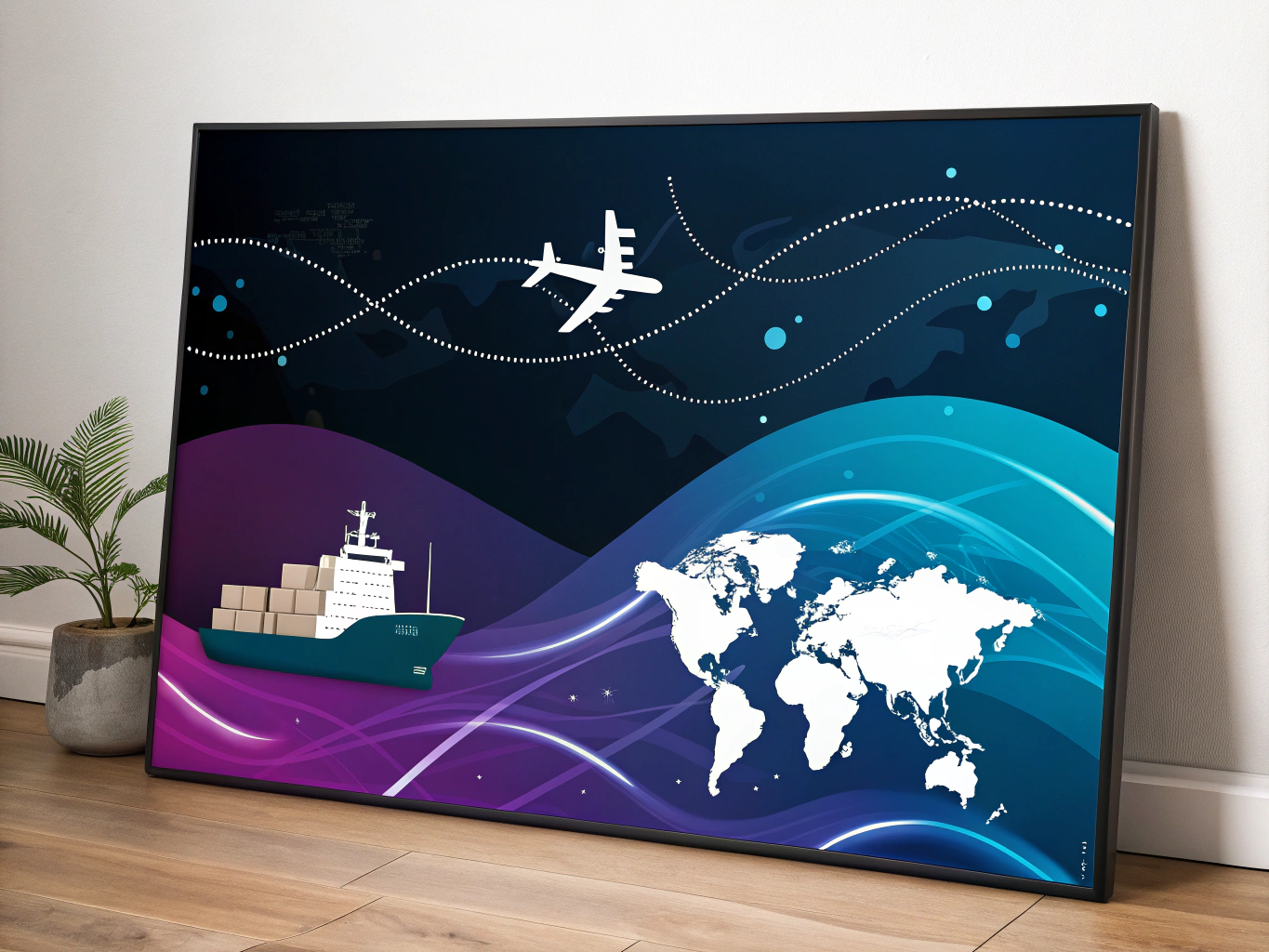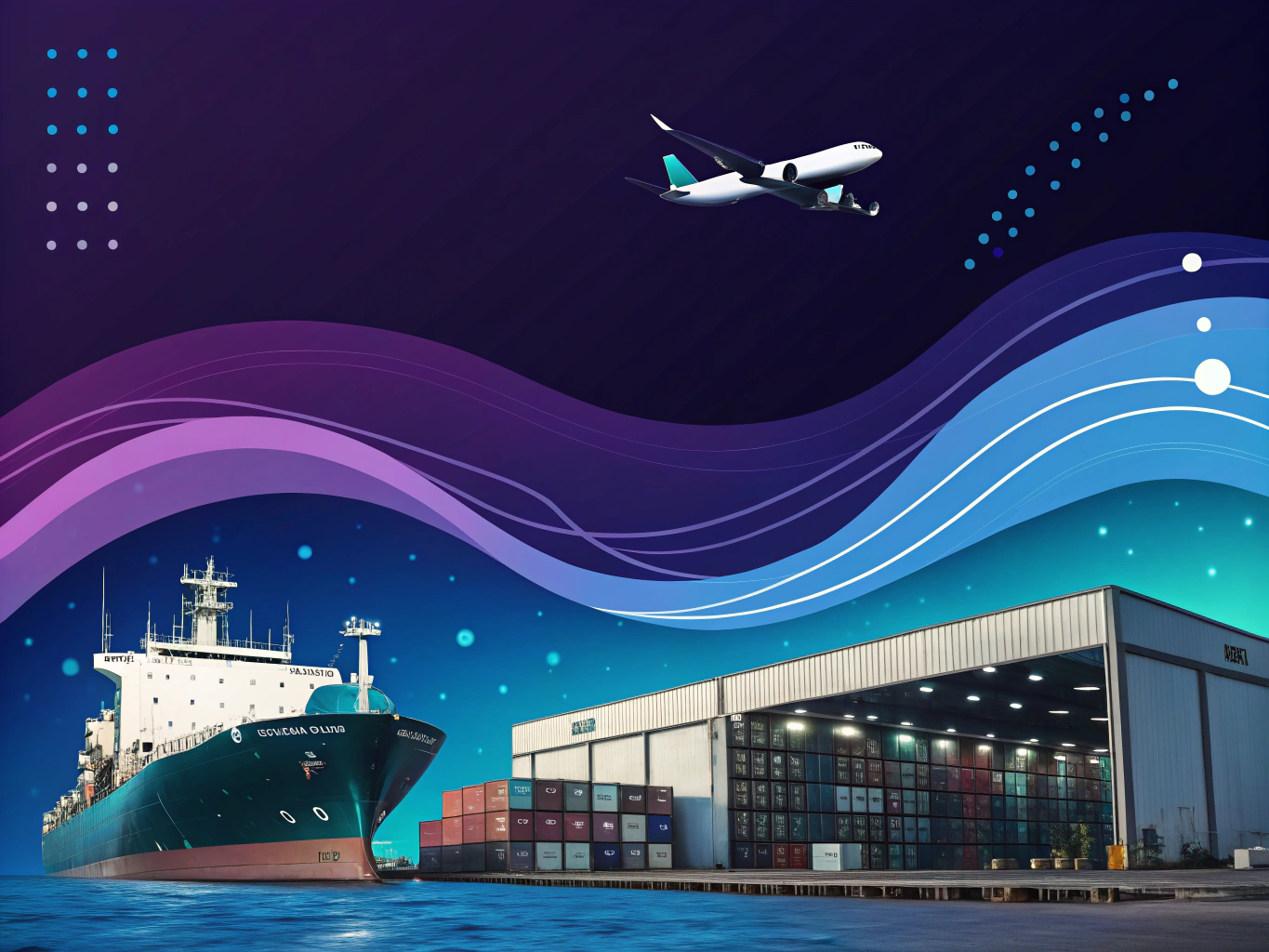The Evolution of Amazon’s Supply Chain Revolution
Remember when Amazon just sold books? Yeah, those were simpler times. Now they’re basically running a logistics empire that would make the Roman Empire’s supply routes look like a kid’s paper route. And at the heart of this empire sits Amazon Global Logistics (AGL) – their not-so-secret weapon that’s reshaping how global commerce moves.

But here’s the thing: while everyone’s busy talking about Amazon’s drones and robot warehouses (cool stuff, don’t get me wrong), the real revolution is happening in the unglamorous world of shipping containers and customs forms. It’s like everyone’s watching the magician’s flourishing hands while the actual trick happens in plain sight.
What Makes Amazon Global Logistics Different?

Think of AGL as Amazon’s answer to the age-old question: “What if we just… did everything ourselves?” It’s like they looked at the traditional logistics industry and said, “Hold my Prime-delivered beer.” Instead of relying on the usual maze of freight forwarders, customs brokers, and shipping companies, Amazon built their own end-to-end solution.
The genius isn’t in creating something entirely new – it’s in how they’ve connected all the dots. Imagine if your smartphone, instead of just being a phone, suddenly started managing your whole life (okay, bad example – it kind of already does). That’s what AGL does for sellers’ supply chains.
The Core Components That Make It Tick
Let’s break down what makes AGL tick without getting lost in corporate jargon:
- Direct fulfillment pathways from manufacturer to Amazon warehouses
- Integrated customs clearance that doesn’t make you want to pull your hair out
- Ocean freight services that actually talk to their fulfillment centers
- Real-time tracking that doesn’t leave you wondering if your products are currently swimming with the fishes
The Real-World Impact of Amazon’s Logistics Play
Here’s where things get interesting. I’ve talked with countless sellers who’ve made the switch to AGL, and their experiences read like a “before and after” weight loss ad – minus the questionable photography. The impact on their businesses has been dramatic, but not always in the ways you’d expect.
The Good, The Bad, and The “Well, That’s Interesting”
Let’s start with the obvious wins: competitive rates that make traditional freight forwarders sweat, streamlined customs clearance that doesn’t require a PhD in international trade law, and direct integration with Amazon’s fulfillment centers. It’s like having a FastPass at Disney World, but for your inventory.
But it’s not all sunshine and Prime delivery boxes. Some sellers have found themselves dealing with longer transit times than traditional methods (I’m looking at you, six-week wait times), and the learning curve can be steeper than scaling Mount Everest in flip-flops. The system works great when it works, but when it doesn’t… well, let’s just say it’s given more than a few sellers some new gray hairs.
Amazon’s logistics network is vast, and for a deeper dive into their fulfillment centers, check out inside Amazon fulfilment centres.
Understanding the Technology Platform
The tech behind AGL is like the operating system for a global supply chain. It’s where the magic happens – connecting suppliers in China with warehouses in Ohio, managing customs documentation, and tracking everything in between. And unlike some of Amazon’s more experimental tech (looking at you, Amazon Fire Phone), this actually works.
The platform integrates with Seller Central in a way that makes you wonder why nobody thought of this before. It’s the kind of integration that makes you realize how disconnected traditional logistics really was. Imagine if your coffee maker could talk directly to your alarm clock – that’s the level of coordination we’re talking about here.
But what really sets it apart is how it handles the complexity of international shipping. Traditional logistics is like playing 3D chess while blindfolded. AGL turns it into something more manageable – still complex, but at least now you can see the board.
The Future of Amazon’s Logistics Empire
Here’s where my inner sci-fi geek gets excited. The infrastructure Amazon’s building isn’t just about moving products from A to B – it’s about creating a nervous system for global commerce. They’re not just playing the game; they’re changing how it’s played.
Think about it: every container they move, every customs form they process, every delivery route they optimize – it’s all data. Data that feeds into their machine learning systems, making each subsequent movement more efficient. It’s like they’re building a living, learning supply chain.
How Amazon Global Logistics Works: Behind the Digital Curtain
Let’s be real – Amazon’s logistics operation is less like a well-oiled machine and more like a massive game of 3D chess being played at hyperspeed. Having helped dozens of brands optimize their supply chains, I’ve seen firsthand how Amazon Global Logistics (AGL) can be both a blessing and a complete headache.
Think of AGL as that overachieving intern who somehow landed a corner office. It’s got the basics down pat, but occasionally sends your shipment to Alaska instead of Arizona. (Yes, I’ve seen this happen. No, the client wasn’t thrilled.)
The End-to-End Process: From Factory Floor to Fulfillment Center
Here’s where things get interesting. The journey of your products through AGL is like watching a perfectly choreographed dance – when it works. Your goods start their journey at the supplier’s location, typically in manufacturing hubs like Shenzhen or Guangzhou. From there, they enter what I like to call “the logistics matrix.”
First stop: booking your shipment. Remember those old-school travel agents who’d book your entire vacation? AGL is like that, except instead of booking your dream getaway, it’s handling your precious inventory through a maze of customs clearance procedures and international shipping regulations.
Amazon’s logistics strategy is continuously evolving. Learn more about how they are transforming logistics in this Forbes article.
Documentation: The Paper Trail That Never Ends
If you thought your tax returns were complicated, wait until you dive into AGL’s documentation requirements. You’ll need:
- Commercial invoices (with every detail except your blood type)
- Packing lists (because apparently “stuff in boxes” isn’t specific enough)
- Export declarations (fun fact: these can be longer than some novels)
- Customs forms (in triplicate, because one copy just isn’t enough)
The Technology Behind Amazon Global Logistics

Here’s where my inner tech geek gets excited. AGL’s technology platform isn’t just another shipping portal – it’s a complex ecosystem that would make Star Trek’s computer look like a calculator from the 90s.
The AGL Portal: Your Command Center
The portal integration with Seller Central is where the magic happens. It’s like having a digital command center that lets you track everything from container temperatures to customs status. Though let’s be honest – sometimes it feels more like trying to decode ancient hieroglyphics than using modern software.
Tracking and Monitoring: Big Brother for Your Boxes
The tracking capabilities are impressive, if occasionally anxiety-inducing. You can watch your shipment’s journey in real-time, which is either fascinating or terrifying, depending on whether your container is actually moving or has been sitting in port for three weeks.
For those selling on platforms like Shopify, understanding logistics is crucial.
Cost Structure: The Price of Convenience
Let’s talk money – everyone’s favorite topic. AGL’s pricing isn’t exactly straightforward, but then again, what is in ecommerce? The cost structure includes:
- Base shipping rates (competitive rates that actually make sense)
- Customs and duties (the hidden fees that love to surprise you)
- Handling fees (because apparently moving boxes isn’t included in shipping)
- Storage costs (think of it as rent for your products)
The Real Cost Comparison
When comparing AGL to traditional freight forwarders or third-party logistics providers, it’s like comparing apples to… well, Amazon. Direct fulfillment through AGL often works out cheaper, especially when you factor in the reduced handling costs and economy of scale advantages.
For more insights, explore the Voice of Customer Analysis tool.
Risk Management: Expecting the Unexpected
If there’s one thing I’ve learned from helping brands navigate AGL, it’s that Murphy’s Law loves logistics. Everything that can go wrong, will go wrong – usually when you’re launching a new product or during peak season.
Common Challenges and Solutions
Shipping delays? They happen. Customs complications? More often than you’d think. Documentation issues? Let’s just say I’ve seen enough paperwork problems to write a horror novel. But here’s the thing – most of these issues are preventable if you know what you’re doing.
For sellers using dropshipping, these insights are invaluable.
Risk Mitigation Strategies That Actually Work
The key to success with AGL isn’t avoiding problems – it’s being prepared for them. This means having solid insurance coverage, maintaining relationships with multiple suppliers, and always, always having a Plan B. And C. And probably D through Z, just to be safe.
One of my clients learned this the hard way during last year’s peak season when their main supplier in China suddenly couldn’t fulfill orders. Having a backup supplier in Vietnam saved their Q4 sales – and probably their entire year’s profitability.
Best Practices: Lessons from the Trenches

After years of working with brands using AGL, I’ve seen what works and what doesn’t. The successful ones treat Amazon Global Logistics like a partner rather than just a service provider. They understand the system’s quirks, plan for its limitations, and most importantly, stay flexible.
Remember: AGL is powerful, but it’s not perfect. Like any tool, its effectiveness depends entirely on how you use it. And sometimes, the best approach is to expect the unexpected and have a good sense of humor about it all.
Shipping logistics are complex but manageable.
Performance Monitoring and Optimization with Amazon Global Logistics
Here’s the thing about amazon global logistics that most sellers don’t get – it’s not just about shipping stuff from point A to point B. The real magic happens when you start diving into the performance data.
I’ve seen countless sellers treat AGL like a “set it and forget it” solution. Big mistake. The most successful sellers I know are obsessively tracking their KPIs, particularly around customs clearance times and delivery reliability. Think of it like having a fitness tracker for your supply chain – you need those metrics to optimize performance.
Key Performance Indicators That Actually Matter
Let’s cut through the noise and focus on what really moves the needle:
- Average customs clearance time (anything over 5 days needs investigation)
- Fulfillment center receiving speed (compare direct fulfillment vs. standard routes)
- Damage rates by shipping method and supplier
- Total landed cost per unit (including hidden fees)
Understanding how Shopify makes money can help you leverage their platform better.
The Future of Amazon Global Logistics
If you think amazon fulfillment is impressive now, just wait. The company’s been quietly building out its ocean freight capabilities, and I’m seeing signs they’re gearing up for something big. They’re not just competing with traditional logistics providers – they’re reimagining the entire global supply chain.
What’s Coming Next?
Based on patent filings and industry chatter, here’s what I’m betting we’ll see in the next 18-24 months:
- AI-powered routing that adapts to real-time port congestion
- Automated customs pre-clearance using blockchain
- Integration of AWD Amazon systems with major manufacturers
- Expanded China direct options with faster processing
New platforms like TikTok Shop are also changing the landscape.
For a deep dive into Amazon’s logistics strategies, read about Amazon’s massive leverage in logistics.
Real-World Success Stories

Let me share a story that perfectly illustrates what’s possible with AGL. One of our clients, a home goods brand, was struggling with their export declaration process and astronomical shipping costs. They switched to amazon global logistics, implemented our suggested optimization strategy, and saw their logistics costs drop by 32% within three months.
But here’s the really interesting part – their competitive rates weren’t just from Amazon’s volume discounts. They discovered that by consolidating shipments and optimizing their packaging specs, they could maximize container utilization in ways their previous freight forwarder never suggested.
Lessons from the Trenches
After analyzing hundreds of AGL implementations, here are the patterns I’ve noticed among the most successful sellers:
- They treat customs clearance as a process to optimize, not just endure
- They leverage data from their amazon fulfillment centers to improve forecasting
- They maintain relationships with multiple suppliers to ensure flexibility
- They don’t blindly trust the system – they verify and track everything
Platforms like eBay also provide valuable seller feedback.
Making the Strategic Decision
Look, I get it – switching to Amazon Global Logistics is a big decision. You’re essentially putting a crucial part of your business in Amazon’s hands. But here’s my take: if you’re already selling on Amazon and doing serious volume, the benefits usually outweigh the risks.
Your Decision Framework
Ask yourself these questions:
- Are your current logistics costs eating into margins?
- Do you struggle with customs clearance delays?
- Could your working capital be better used elsewhere?
- Would faster fulfillment give you a competitive edge?
Understanding platforms like TikTok Shop is crucial for modern ecommerce strategies.
Final Thoughts on Amazon Global Logistics
Here’s what fascinates me about AGL – it’s not just another logistics service. It’s Amazon doing what Amazon does best: taking a complex problem and making it programmable. They’re essentially turning the messy world of international logistics into a standardized API.
But let’s be real – it’s not perfect. There are still horror stories about delayed shipments and communication black holes. The difference is that Amazon’s iterating and improving at a pace that traditional logistics providers can’t match.
The question isn’t whether to use Amazon Global Logistics – it’s how to use it strategically. The winners in this space will be the sellers who understand that AGL is a tool, not a magic bullet. They’ll use it as part of a broader strategy that includes smart inventory management, strategic supplier relationships, and data-driven decision making.
And remember – the logistics landscape is changing faster than ever. What works today might not work tomorrow. Stay curious, keep experimenting, and never stop optimizing. That’s how you’ll stay ahead in this game.
Because at the end of the day, logistics isn’t just about moving boxes – it’s about building a resilient, scalable business that can compete in an increasingly complex global marketplace. And with the right approach to AGL, you’ve got a powerful ally in that mission.
For those using UPC codes on Amazon, logistics is just one piece of the puzzle.
To further optimize, consider how platforms like TikTok are influencing sales.
For a comparison, see Temu vs. Shein for insights on ecommerce logistics.
Utilizing Amazon Merch can be a strategic advantage.
Stay informed by engaging with the eBay community for diverse perspectives.
Remember to stock up on shipping supplies to ensure smooth operations.
For buyers, understanding TikTok Shop can enhance the purchasing experience.
👉👉 Create Photos, Videos & Optimized Content in minutes 👈👈
Related Articles:
- Challenges of Shipping Delays on Amazon: A Guide
- Amazon Merch on Demand: A Beginner’s Guide to Success
- Temu Shipping: What to Expect When You Order in 2024
Frequently Asked Questions
What is china direct?
China Direct is a program by Amazon that facilitates the direct import of products from Chinese manufacturers to various Amazon marketplaces around the world. This service streamlines the supply chain by allowing businesses to source products directly from China, reducing lead times and potentially lowering costs.
What is amazon awd?
Amazon AWD, or Amazon Warehousing and Distribution, is a service that helps sellers store and manage their inventory closer to customers. It enables better inventory management by offering storage solutions that integrate seamlessly with Amazon’s fulfillment network, ensuring quicker delivery times and ultimately enhancing customer satisfaction.
How to use amazon global logistics?
To use Amazon Global Logistics, sellers need to sign up for an account and select the international shipping services they require. Amazon provides comprehensive assistance with customs clearance, freight forwarding, and delivery, simplifying the complexities of global trade and allowing sellers to focus on expanding their business internationally.
What is amazon global logistics?
Amazon Global Logistics is a service that offers end-to-end international shipping solutions for businesses. It provides a seamless experience for sellers looking to ship goods across borders, handling everything from freight forwarding to customs clearance, which helps streamline the process of reaching global customers.
What are the disadvantages to amazon of entering the global logistics business?
Entering the global logistics business exposes Amazon to significant competition from established logistics companies, which may lead to initial high operational costs. Additionally, regulatory challenges and the complexity of managing a vast logistics network across different countries present substantial risks and require substantial investment in infrastructure and technology.
About the Author
Vijay Jacob is the founder and chief contributing writer for ProductScope AI focused on storytelling in AI and tech. You can follow him on X and LinkedIn, and ProductScope AI on X and on LinkedIn.
We’re also building a powerful AI Studio for Brands & Creators to sell smarter and faster with AI. With PS Studio you can generate AI Images, AI Videos, Chat and Automate repeat writing with AI Agents that can produce content in your voice and tone all in one place. If you sell on Amazon you can even optimize your Amazon Product Listings or get unique customer insights with PS Optimize.
🎁 Limited time Bonus: I put together an exclusive welcome gift called the “Formula,” which includes all of my free checklists (from SEO to Image Design to content creation at scale), including the top AI agents, and ways to scale your brand & content strategy today. Sign up free to get 200 PS Studio credits on us, and as a bonus, you will receive the “formula” via email as a thank you for your time.
